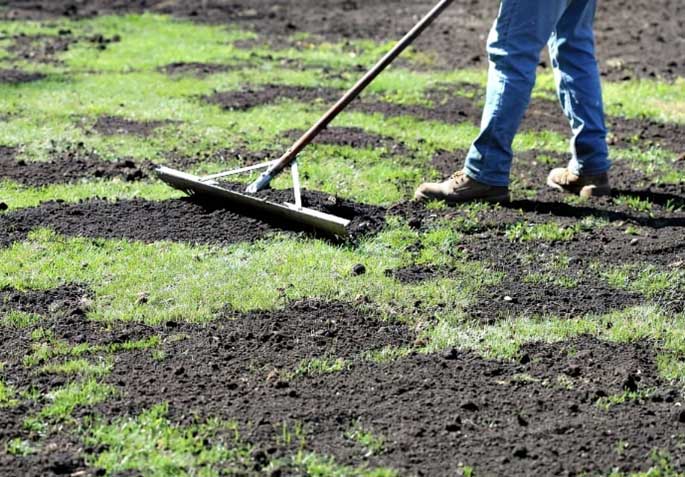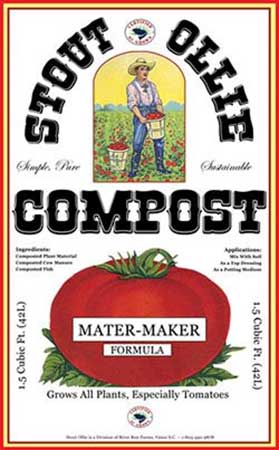

by Kathy Torres
There are a number of reasons for gardeners to love this area of South Carolina, like a long growing season, minimal freezing temperatures in winter (most of the time), and availability of many native plants that are precisely suited to the environment here. Unfortunately, there is one thing lacking in most landscapes in the Midlands… good soil. When you visit Wingard’s Market in search of plants for a yard project, you will likely be advised to add a soil amendment, especially when planting something with a significant root system. The clay, rock, and sand that make up much of the soil just doesn’t cut it, with the exception of those native plants that are used to it.
Fertilizing provides necessary nutrition for plants, helping them to get established and grow, however soil quality may not be affected. If you feel that plants are not flourishing, if tree roots have taken over in a garden bed, or the soil is packed, it may be a good idea to top dress. This applies to shrubs, trees and even lawns.
Top dressing is the practice of adding compost, sand or top-soil over existing plants, a simple technique that can prove to be a very beneficial maintenance task. Over time, nutrients and organic matter will drift downward to enhance the soil below. Be sure not to confuse this with adding mulch, which will help to keep soil moist, but does not improve soil quality. Results from top dressing can be transformational if done annually or even every 2 or 3 years. The advantages include:
- Increased organic matter
- Replenished nutrients
- Improved soil structure
- Conserved water through improved retention
- Cooling of the soil
- Enhanced bacterial action and mycorrhizal fungi
- Vigorous growth of plants
 For shrubs and trees, Wingard’s recommends Stout Ollie Compost for top dressing. It is made up of annual plant material (breaks down yearly), cow manure and fish. It is produced in the Low Country of South Carolina by the Oliver family. To learn more about this product click HERE. It’s very interesting!
For shrubs and trees, Wingard’s recommends Stout Ollie Compost for top dressing. It is made up of annual plant material (breaks down yearly), cow manure and fish. It is produced in the Low Country of South Carolina by the Oliver family. To learn more about this product click HERE. It’s very interesting!
Spread 2-3 inches of compost underneath trees and shrubs, out to the drip line (diameter of canopy) being careful not to cover about 2 inches around the trunk or base of the plant. This is the place where carbon dioxide and oxygen are exchanged, and trees/shrubs may smother if this area is covered. Be sure to rake mulch to the side before adding compost and rake mulch back in place when you’re done. Do not add compost on top of mulch. One of the most frequent errors of top dressing is using materials that are not well-aged or contain weed seeds. It’s essential to choose high-quality materials and apply correctly to maximize the benefits of top dressing. This task is ideal for spring but can be done in fall when your list of other garden chores is probably not as long. The advantage to fall is a longer period for the compost to absorb into the ground and replenish the soil before the next growing season.
Summer is the appropriate time of year to top dress warm season grasses after you have mowed a few times and the grass is growing significantly. You may cause damage when grass is dormant, so make sure the old grass from the previous year has been cut off. It’s best NOT to top dress the lawn when the grass is dormant. When there are no bare spots and grass is dense, top dressing is NOT necessary.
Topsoil or sand can be used on lawns, however adding compost will increase the effectiveness. When done properly, top dressing will level the lawn and add necessary nutrients to the soil that boost the health and appearance of the grass. NOTE: Top dressing isn’t the solution to level severely rough lawns (areas more than an inch deep). Attempting to simply fill the hole with dirt will suffocate the grass and prevent regrowth.
Here are the pros and cons of recommended materials for top-dressing lawns:
Topsoil is a good middle-ground material. It can add valuable nutrients and smooth out an uneven lawn.
Compost contains nutrients that can amend your soil and improve growth, but is a bit harder to spread.
Sand is ideal for improving drainage and smoothing out the lawn but lacks necessary nutrients to boost growth.
Custom mixture. You can combine sand, compost, and topsoil to create a custom top-dressing mixture based on the needs of your soil and grass type.
When you are ready to top dress your lawn:
- Cut it first, slightly shorter than usual.
- Dethatch and remove any debris.
- Distribute the material in small piles.
- Rake the piles into a thin layer (about ½ inch)
- Level the lawn using a wide rake or a lawn-leveling rake.
The lawn will be in a delicate state after top dressing. Don’t walk on it as much as possible until the grass has had time to grow in and through the top-dressing material. Once the grass is strong again, you can confidently return to normal use.
Watering is necessary after top dressing trees, shrubs and lawns. Check the weather forecast before top dressing to avoid a deluge that will wash away the top-dressing material. The lawn will require the most attention depending on the summer heat. Water immediately after application to help the material sink down and stay in place, then as much as you would normally to keep the grass healthy and growing. For existing shrubs and trees, water initially, then about once a week for a few weeks. Newly planted shrubs and trees will need a bit more because roots are transitioning. If soil amendment was used in planting new shrubs and trees, top dressing is not absolutely necessary, however it may add a boost to the soil quality. Just be sure to keep a 2-inch space between the top dress material and the trunk or base. Remember, this is not a replacement for mulch. Adding mulch will keep the top dress material in place and will provide a lasting effect in the process, so go ahead and add some pine straw or bark.
Summer is coming to an end, but we still have some warm weather ahead. Fall is just around the corner, so it’s prime time to improve your soil quality by top dressing. I would probably wait until next summer on the lawn, but it’s an ideal time to work on shrubs and trees. You’ll reap the rewards next spring and summer. FYI… If you have perennials or evergreens planted in pots, adding a little compost will even give them a boost and enhance performance next year. Before you get too busy planting pansies and snapdragons, why not do a little maintenance on shrubs and trees that need a little TLC. Seems like all I can do in the yard right now is water, water, and water, so maybe spreading a little good dirt is just what the plants need, and me, too!
For more detailed info on this subject, go to Clemson’s HGIC website.

